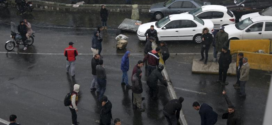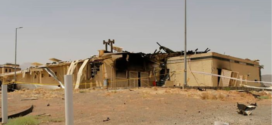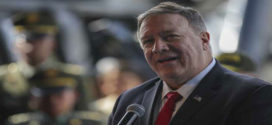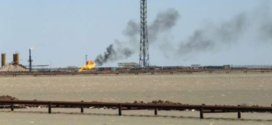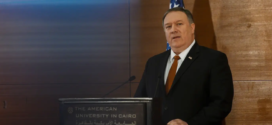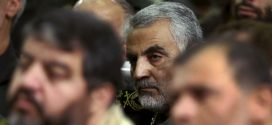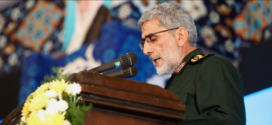
The largest group from among the banned nationalities has built a durable community here.
By Jason Rezaian February 6, 2017
For Iranian Americans, estimated at somewhere near a million strong, President Trump’s order banning the entry of people from Iran and six other countries has a doomsday feel — one that is uncomfortably familiar. Since the Iran hostage crisis in 1979, through the “axis of evil” in 2002, they’ve reported feeling intensely unwelcome. That sensation began to break only last year, with President Barack Obama’s nuclear deal. It was a moment of optimism that many felt was too good to be true. Now, so many of them tell me, perhaps that cynicism was vindicated.
I am Iranian American, and we have come so far in this country. We have a strong presence in politics, culture, arts and sports — and a voice that our family born in Iran could never have imagined when they came over. It’s been a long time since the days when “ayatollah” was a schoolyard slur. But the new order, and the climate of fear that surrounds it — an Iranian-owned restaurant was burned and an Iranian American boy was detained at Dulles as a security risk — threatens to bring that era back.
Iranian immigrants, permanent residents and visitors make up by far the largest share of the people from banned nations. There are 17,000 students from the seven countries included in the ban studying at U.S. universities. Over 12,000 of those are from Iran. In 2015, over 35,000 nonimmigrant visas of all types were issued to Iranians, many of whom already have relatives with long-established lives in the United States.
In 1959, when my father came to the United States from Iran, there were few people from his homeland waiting to greet him. That changed quickly. During much of the 1960s and 1970s, the highest number of foreign students in the United States came from Iran. My dad became a U.S. citizen. He watched the Beatles’ British invasion on “The Ed Sullivan Show,” cried with other Americans when John F. Kennedy was assassinated, started his own business — importing Persian rugs — married a girl from the evangelical Christian heartland of Illinois, and fathered two very American sons.
Then, in 1979, a mass exodus of Iranians took place following the revolution and the subsequent founding of the Islamic Republic. A majority had their eyes set on the United States. America was a natural choice: Before the revolution, multiple administrations enjoyed a cozy relationship with Iran’s monarch, Shah Mohammad Reza Pahlavi. He was a despot, but he kept close ties with Washington and supported his subjects in studying here.
But the hostage crisis soured American sentiments on Iran. People here boycotted, shot at and confronted the owners of Iranian-owned businesses like ours, telling the families to leave. (I had never experienced that until this past weekend when a faceless Twitter user suggested that I “GO BACK TO WHERE YOU CAME FROM!!”)
Still, my dad and thousands of others stayed in America and grew a community. He helped to bring dozens of his relatives and extended family and friends to this country — all of them working to carve a place for themselves here and supporting other new arrivals in the process. Our family’s story is in no way unique among Iranians in the United States, and that is precisely why the executive order banning Iranian arrivals is hard to swallow.
My dad’s lifelong mantra was “I’m Iranian by birth, I’m American by choice, and I’m proud of both.” He believed that the ability to simultaneously honor his cultural heritage and embrace the freedoms his adopted home offered was one of the key ingredients that has made America great from the beginning. I was born in this country, but I have always aspired to that ideal, too, even in the face of forces in Iran and in the United States that demand us to choose one over the other.
A large number of Iranians arriving in this country go on to be doctors, lawyers and engineers. Others earn CPAs and MBAs. Not all Iranians who come to America receive college degrees, but in their own ways most of them successfully integrate into an American way of life. Some abandon faith entirely, others have converted to Christianity and there are those who become even more devout Muslims or Jews.
They tend to have higher incomes than other communities, according to surveys. They are senior executives at some of the largest companies in the world, including Google, Expedia, Twitter and eBay. There has been an Iranian-born U.S. ambassador (to Sweden), and numerous Iranian Americans worked for Obama’s administration, including a personal aide to the president and a director on the National Security Council’s staff. Even now, there are several Iranian Americans — holdovers from the last administration — employed at the White House, according to a government official who worked there.
In “Shahs of Sunset,” they are on reality TV. One stars in the ABC hit show “Blackish.” Another adapted “Death of a Salesman” into an Oscar-nominated film; he will skip the ceremony in protest. Iranian Americans have played in the NFL, NBA, MLB and NHL. (Among them are an Iranian Japanese all-star pitcher, an Iranian Icelandic American NLF Pro Bowler and an African Iranian American whose difficult-to-pronounce Iranian family name — Houshmandzadeh — was used as the basis for commercials on ESPN.)
Across them all, there is no evidence to support the idea that we are a threat to America’s national security, which the ban is ostensibly intended to protect. There are no examples of an Iranian committing an act of terror or any mass shooting in this country.
Implicating law-abiding people of any nationality in crimes against national security that they have not committed is unsound strategy, incompatible with our democracy. From personal experience, I can tell you that while such policies may be deemed useful by regimes like the one in Tehran, they should have no place in Washington.
 khalijefars News, Blogs, Art and Community
khalijefars News, Blogs, Art and Community
